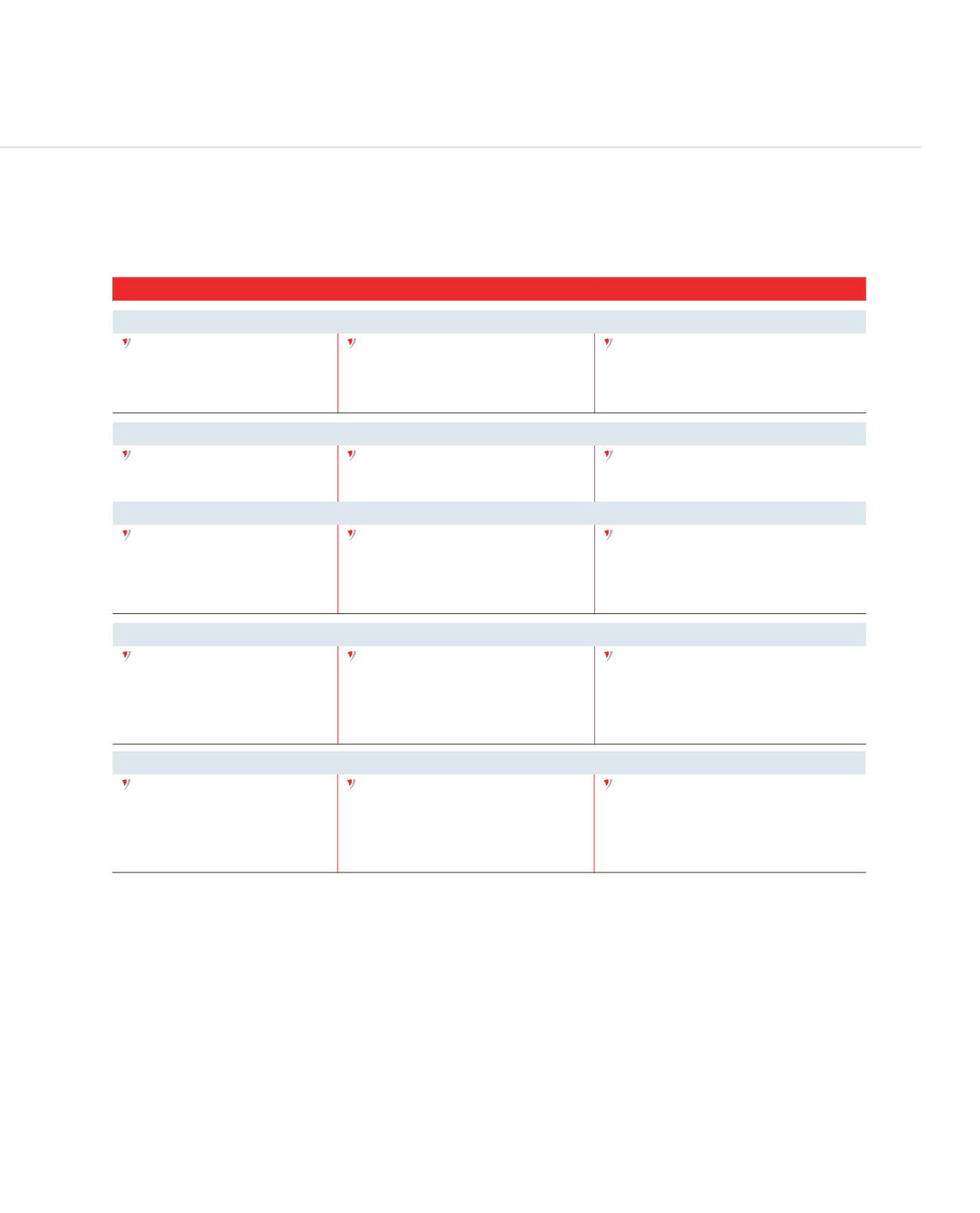

AfrAsia Bank Limited and its Group Entities
Annual Report 2015
page 157
CURRENT YEAR PERFORMANCE AGAINST OBJECTIVES AND FUTURE GROWTH
(CONTINUED)
OBJECTIVES FOR 2014/15
PERFORMANCE FOR 2014/15
OBJECTIVES FOR 2015/16
Statement of Financial Position – Deposits Growth
Deposits are to continue their rising
trend to reach MUR 44,3bn.
The Bank realised a noticeable growth in
its customer deposits base to reach
MUR 66,9bn by the end of June 2015, that
is, a growth of 63%.
While maintaining its existing customer base
and gaining on market share, the Bank aims
to increase its deposit base to MUR 77,1bn by
the end of June 2016.
Statement of Financial Position – Asset Quality
Non-performing loans are expected
to return to 1% of gross loans.
Non-performing loans as a percentage
of gross loans amounted to 5.2% by June
2015.
The Bank expects its non-performing loans to
be 2.9% of its gross loans.
Statement of Financial Position – Capital Management
Capital adequacy ratio is expected
to remain above the regulatory
requirement of 10%. New Basel III
ratios will be implemented during
the year.
The Bank remained well capitalized and
achieved a capital adequacy ratio of 13.7%
under Basel III.
The Bank will achieve a capital adequacy
ratio above the minimum regulatory capital
requirements under the Basel III provisions.
Performance Ratio – Return on Average Equity
Return on average equity for the
Bank is targeted to be above 19.33%
The Bank’s return on average equity stood
at 6.5% for the year under review. This is
lower than the target due to “exceptional”
negative impact resulting from the
impairment of its overseas subsidiary.
Return on average equity for the Bank is
targeted to be above 20%.
Performance Ratio – Cost to Income
Cost control was expected to
bring a cost to income ratio of
under 50%.
Well monitored cost control policy along
with increased income contributed in a
conservative cost to income ratio of 36%.
The Bank will continue to maintain a cost
control policy while continuing to invest in
core resources.
















